If you’ve got plenty of fresh peppers, consider saving some for the pantry. Dehydrated peppers can be used in any number of dishes and having them pre-cut saves time, too!
Having a jar or two full of dried peppers in the pantry allows you to easily add flavor to dishes. Add a pinch of dehydrated hot peppers to these Instant Pot refried beans or stir dried sweet peppers into this meat sauce if you don’t have fresh peppers on hand.
How to Dry Peppers
There are several methods to consider when it comes to drying fresh peppers. Whether you have sweet or hot peppers, the method is the same, but be sure to read below for some specific recommendations about drying hot peppers.
This is also a great way to eliminate food waste. Instead of picking up peppers at the grocery store and letting them languish until they’re wrinkly, chop them up and dry them so you’ll have them on hand when you need them.
Ingredients
Peppers — Any type of pepper works! You can use an assortment of pepper varieties, sweet peppers or hot peppers, store bought or home grown, including:
5 Easy Steps to Transform Your Pantry!
Ready to switch from store bought to homemade? Let me help you make some changes! Grab my FREE five-part guide to getting started.
- Bell peppers of all colors – green peppers, red peppers, yellow peppers, any color!
- Cayenne peppers
- Jalapeno peppers
- Banana peppers
- Chili peppers
The peppers you see here are from my garden, both sweet peppers. These are pretty thin walled; store bought peppers will likely be a bit thicker and require a little more time to be completely dried.
Want to bring the heat? You can make a homemade version of your favorite hot pepper flakes with this recipe.
Using a Food Dehydrator
A dehydrator is, as the name suggests, an electric appliance specifically for drying foods. They come in a variety of shapes and sizes. With removable trays and a fan that blows warm air, a dehydrator can be a good investment if you plan to preserve much produce this way.
The Handcrafted Pantry

Ready to DIY your pantry with more wholesome ingredients? Check out my ebook, The Handcrafted Pantry! Filled with delicious recipes for some of your favorite condiments, snacks, and toppings, it’s the guide you need to start skipping packaged products and embrace homemade.
I use an Excalibur dehydrator that I’ve had for ten or so years now, but any brand will do. My 9-tray excalibur allows me to process the most produce out of all three of the methods listed here, making the most of the energy used to dry them.
To dehydrate peppers with this tool, place sliced or chopped pepper pieces on the dehydrator trays in a single layer. Set the dehydrator to 135°F and process for 8-12 hours or until the peppers are almost brittle. The thickness of the peppers will determine how long you’ll need to process them, as will the size of your peppers.
Drying Fresh Peppers in the Oven
Set the oven temperature to 140ºF. Drying peppers in the oven utilizes equipment most people already have on hand. It’s not the most energy-efficient method, but it does the trick in a pinch.
Line a baking sheet with a wire rack and spread peppers in a single layer and process until peppers are fully dry, almost brittle.
Air-Drying Peppers
If you live in a very dry climate, you have the opportunity to use the air drying method. If you have plenty of space, you can simply set small peppers out on a table in a single layer. Larger peppers should be cut in halves or quarters.
You can also thread peppers on a string and suspend them from rafters or fences or any number of places until they’re thoroughly dried.
For best results, choose an area that offers good air circulation and avoid placing the peppers in direct sunlight.
FAQs – Dehydrated Peppers
If you’ve never dried peppers, you might find yourself with some questions. Let’s see if I can answer all of them! If not, feel free to drop yours in the comment section so I can add it.
How long does it take to dehydrate peppers in a dehydrator?
The drying process and how much time it takes depends on a number of factors: The temperature at which you dehydrate them, the humidity of the air, the thickness of the slices, and the moisture in the peppers themselves. Plan for 8-12 hours in a dehydrator.
For oven drying, it’s about 16-24 hours. Sun drying can take several days and air drying will take about a month.
When are they done?
Dried peppers (and any dried vegetable) should be dehydrated to the point of crispness. If they remain flexible, extend the dehydrating time. If they are pulled too soon, remaining moisture in the peppers can cause them to mold in storage.
How long will dehydrated peppers last?
Stored properly, dried peppers will last about a year. What do I mean by “stored properly” you ask? They need to be sealed in an airtight-container for successful long-term food storage. This is especially true if you live in a humid climate. I like to use mason jars with the blue “leak-proof” lids for the best seal. Using desiccant packets in each jar can help prevent spoilage. Dehydrated food should be stored in a cool dark place.
What is conditioning and do I need to do it?
Due to inconsistent thickness, some pieces of pepper may retain a bit more moisture than others. As a result, moisture levels can vary within a single piece. Conditioning the dried peppers — both bell peppers and chile peppers — will help redistribute the moisture evenly.
Cool dried peppers thoroughly and place loosely packed pieces in a large airtight container or jar. Seal the jar and let stand for a week, shaking it daily to break up the pieces. The excess moisture in some pieces will be reabsorbed by drier pieces. If any condensation appears on the inside of the jar itself, there’s still too much moisture in the veggies. Return them to the dehydrator to remove more moisture before putting them in jars for storage.
Using Dehydrated Peppers
Use one tablespoon of chopped dried peppers to replace 1/4 cup of chopped fresh peppers. In most cases, you won’t need to rehydrate the peppers. Simply stir them into recipes and allow them to absorb moisture as the meal cooks.
For rehydrated peppers, soak 1 cup of dried peppers in 2 cups of water for an hour; drain.
To make a dried pepper powder, place pieces in a spice grinder, coffee grinder, or blender and process until you have a fine powder.
★ Did you love this recipe? Be sure to give it a star rating below! ★
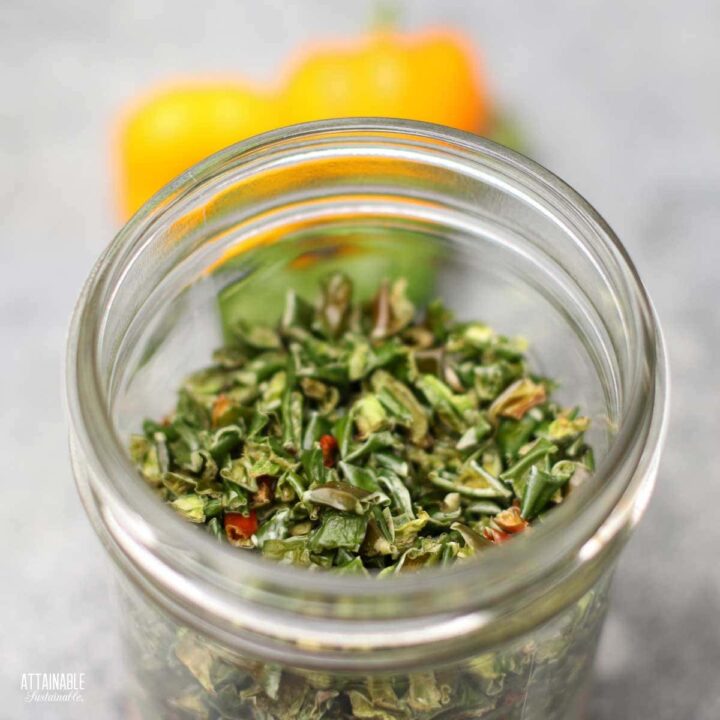
Dehydrated Peppers for Food Storage
For fast flavor in recipes, dehydrated peppers can't be beat. You can use sweet bell peppers or hot peppers, store bought or home grown. These dried peppers will add flavor to your meals and save you the work of chopping on busy weeknights.
Ingredients
- 3 pounds of peppers
Instructions
- Wash and dry peppers. Remove stems and seeds.
- Slice or dice peppers, aiming for a 3/8" thickness or dice.
In a Dehydrator:
- Spread peppers on a drying tray with little to no overlap so that the air can flow easily around the pieces.
- Set dehydrator to 135°F and process for 8-12 hours or until the pepper pieces are quite dry and brittle.
In the Oven:
- Set the oven temperature to 140ºF.
- Line a cookie sheet with a wire rack (a cooling rack is perfect) and spread peppers in a single layer and process until peppers are fully dry, almost brittle.
Storage:
- Allow finished peppers to cool completely and condition as noted below. Store in an airtight container at room temperature for up to a year.
Notes
Due to inconsistent thickness, some pieces of pepper may retain a bit more moisture than others. As a result, moisture levels can vary within a single piece.
Feel free to scale up the amount of peppers you use in order to fill your dehydrator and make the most of the energy you use to run it.
Conditioning the dried peppers will help redistribute the moisture evenly. Cool dried peppers thoroughly and place loosely packed pieces in a large glass jar. Seal the jar and let stand for a week, shaking it daily to break up the pieces. The excess moisture in some pieces will be reabsorbed by drier pieces. If any condensation appears on the inside of the jar itself, there’s still too much moisture in the veggies. Return them to the dehydrator to remove more moisture before putting them in jars for storage.
If you are processing hot peppers, it's a good idea to use gloves to protect your hands; avoid touching your face or eyes.
Add dehydrated bell peppers to soups and pasta sauce in their dried form. To add to dishes like pasta salad, rehydrate them first. Use one tablespoon of chopped dried peppers to replace 1/4 cup of chopped fresh peppers. In most cases, you won’t need to rehydrate the peppers. Simply stir them into recipes and allow them to absorb moisture as the meal cooks.
Nutrition Information:
Yield: 24 Serving Size: 2 tablespoonsAmount Per Serving: Calories: 16Total Fat: 0gSaturated Fat: 0gTrans Fat: 0gUnsaturated Fat: 0gCholesterol: 0mgSodium: 1mgCarbohydrates: 4gFiber: 1gSugar: 1gProtein: 1g

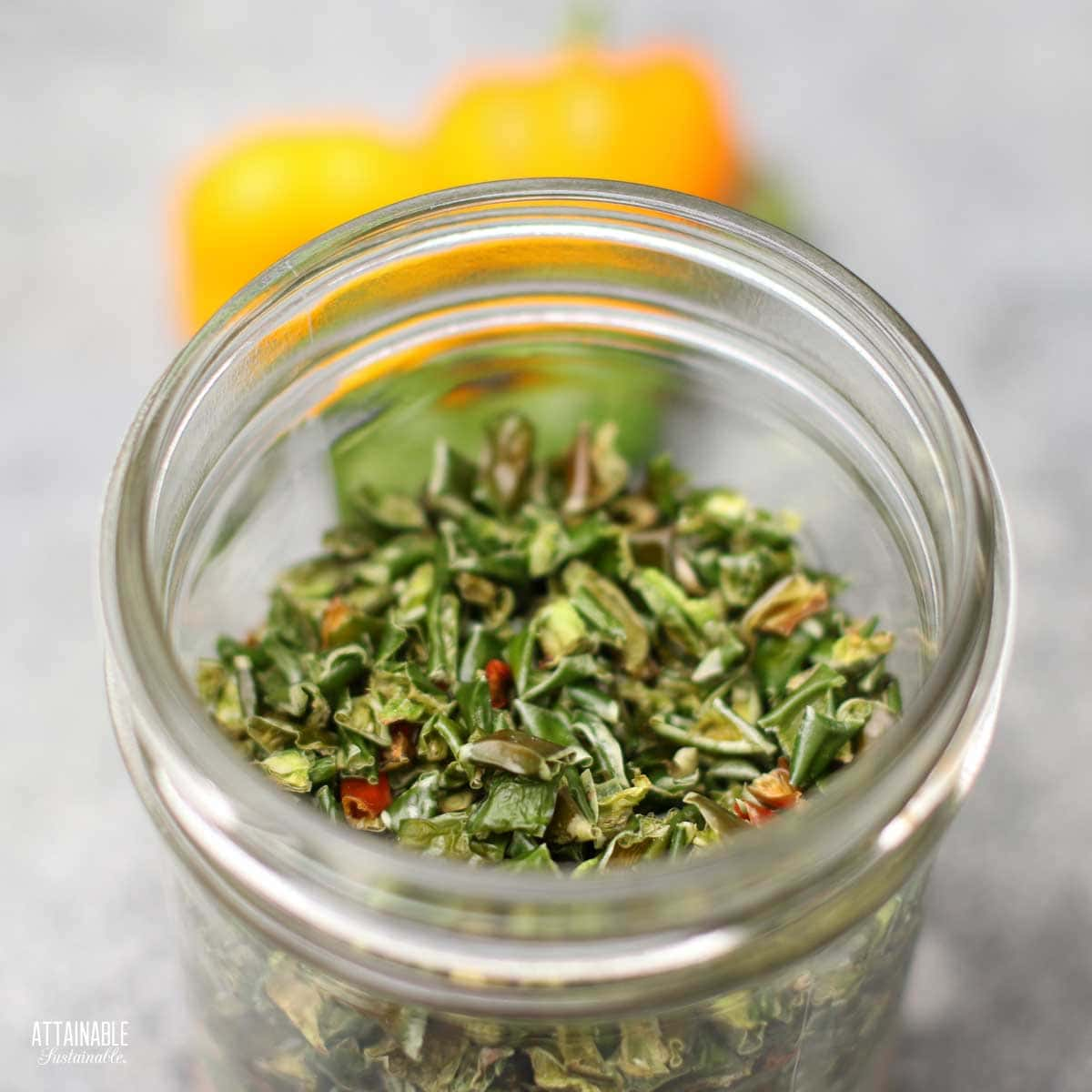
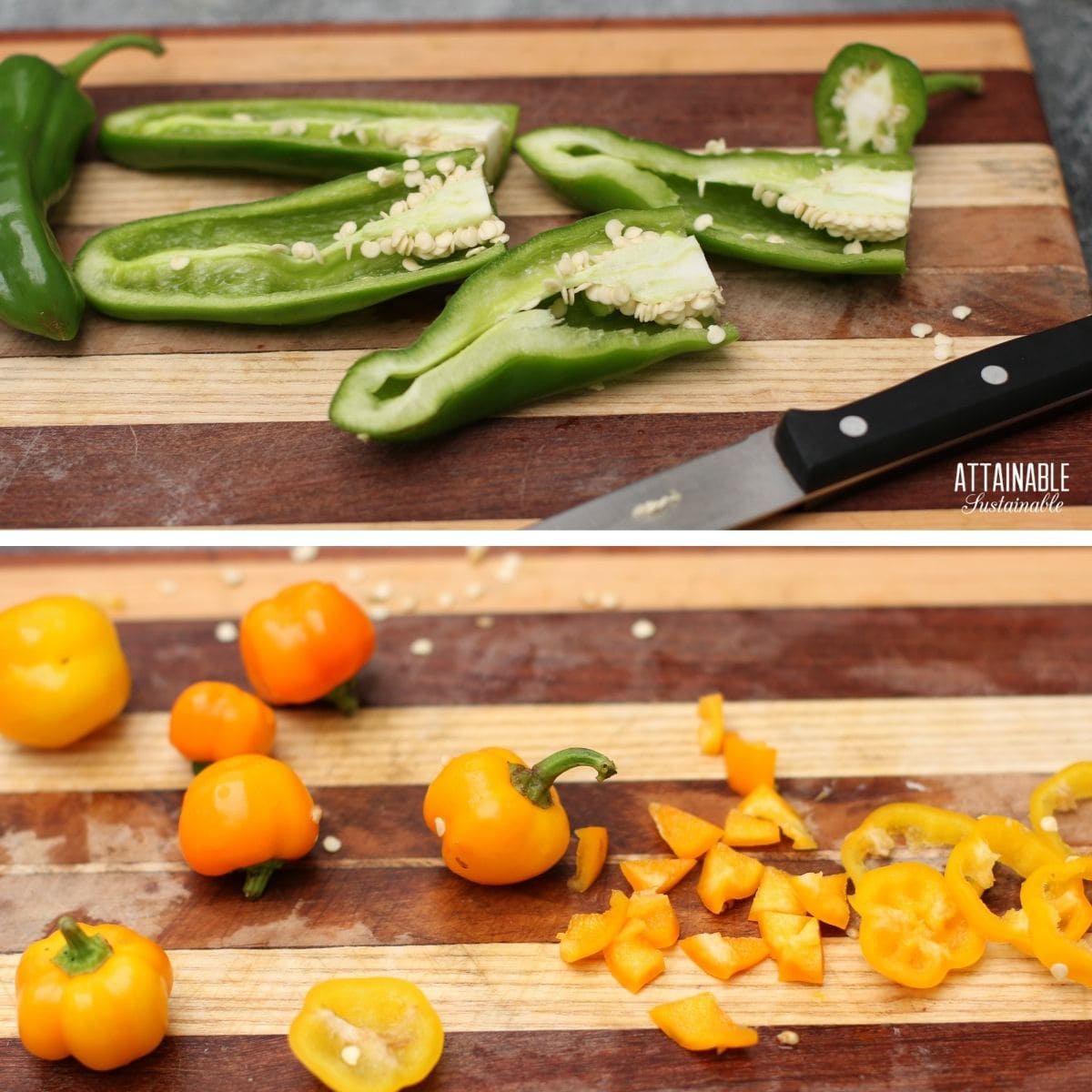
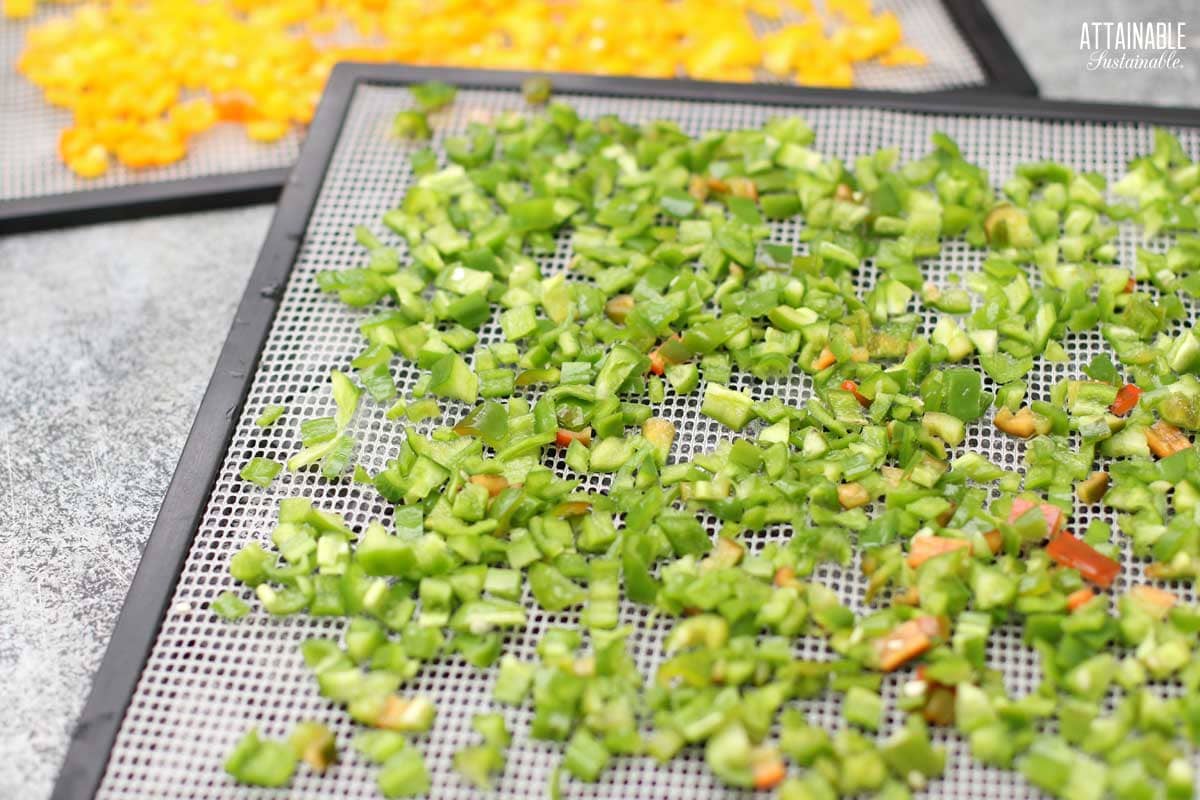
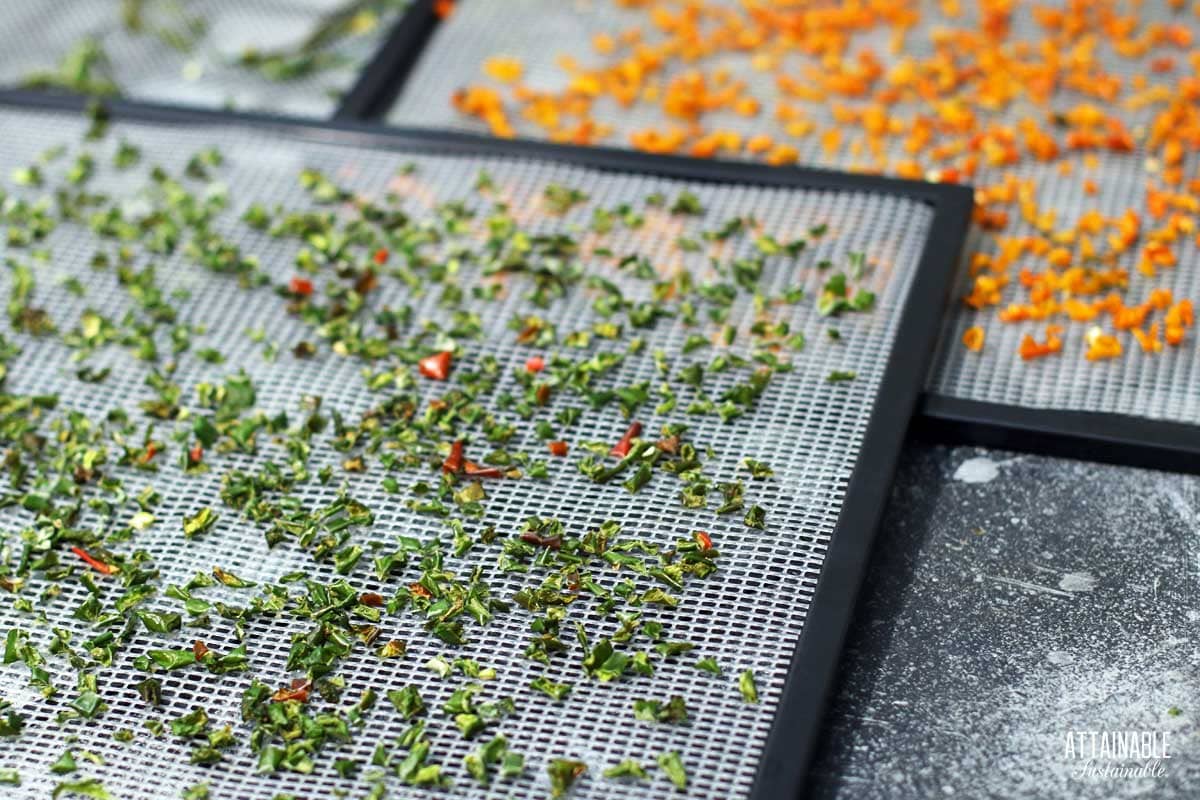
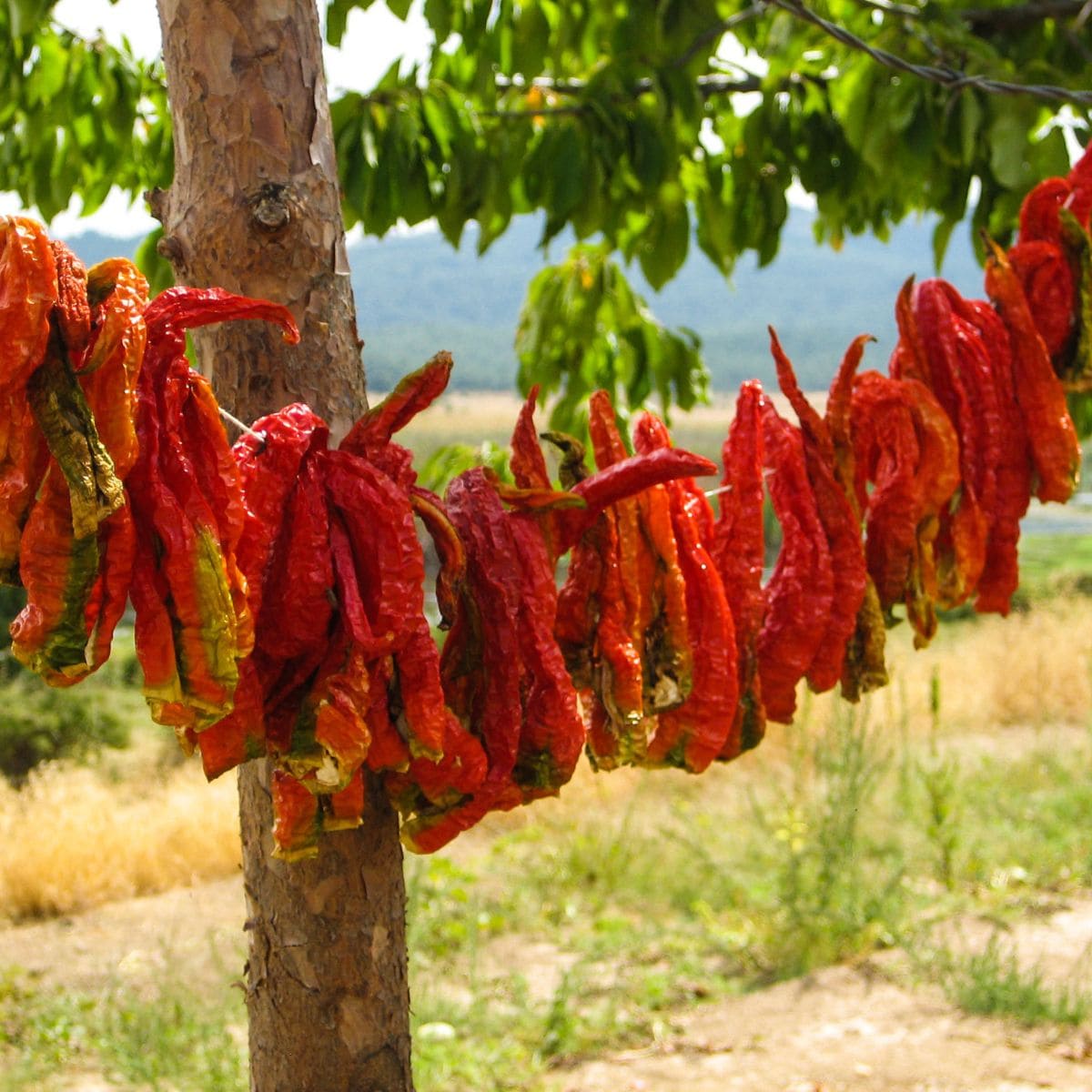
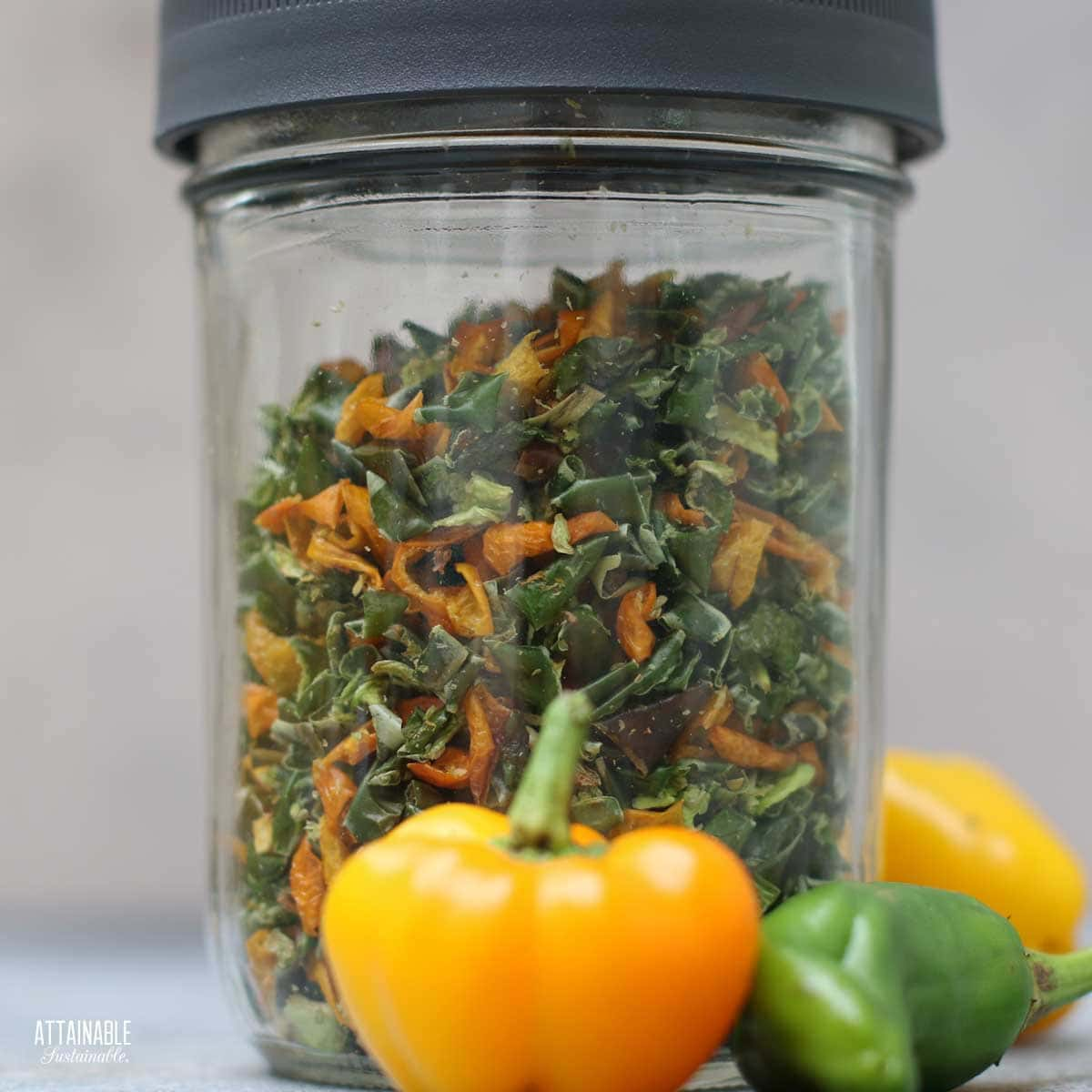
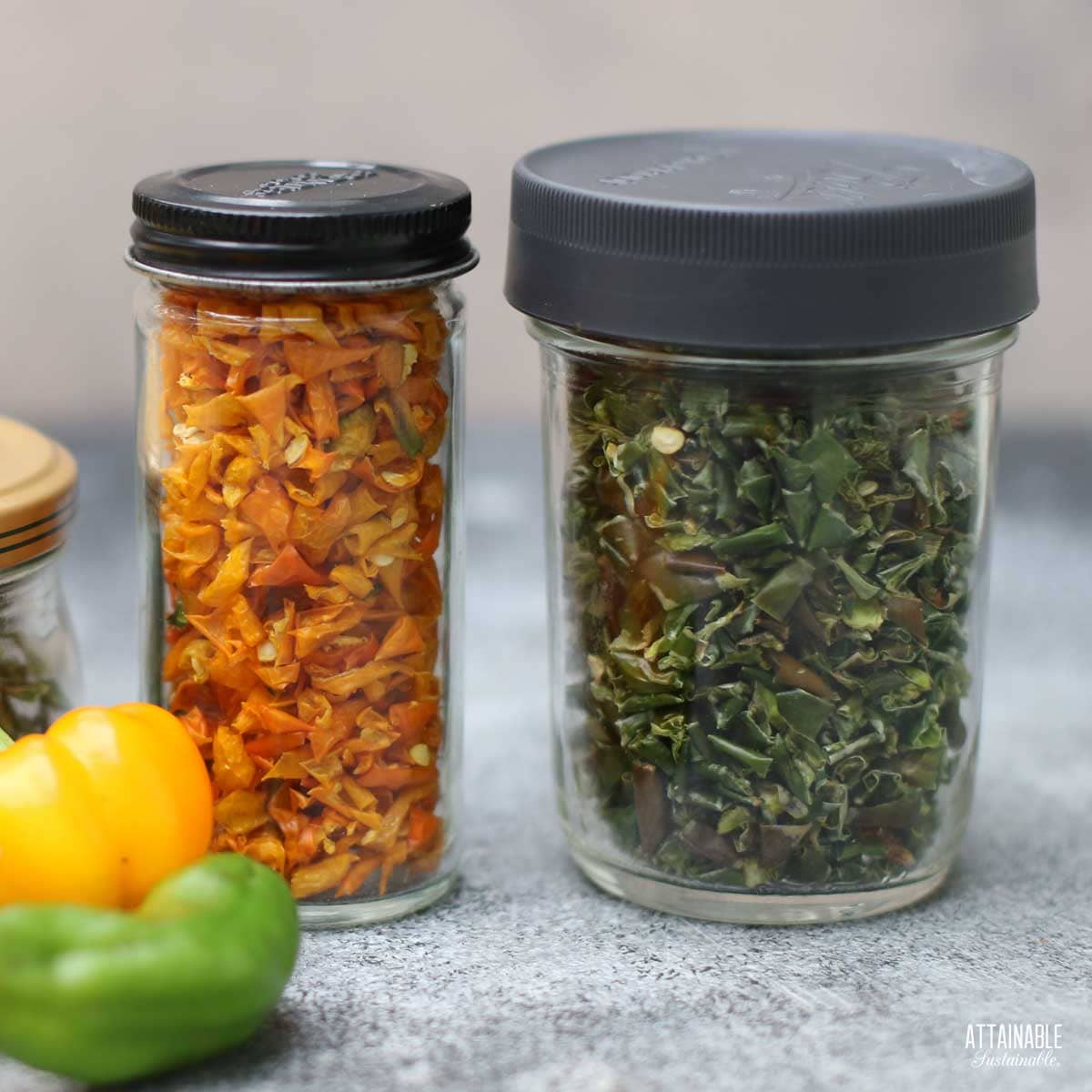
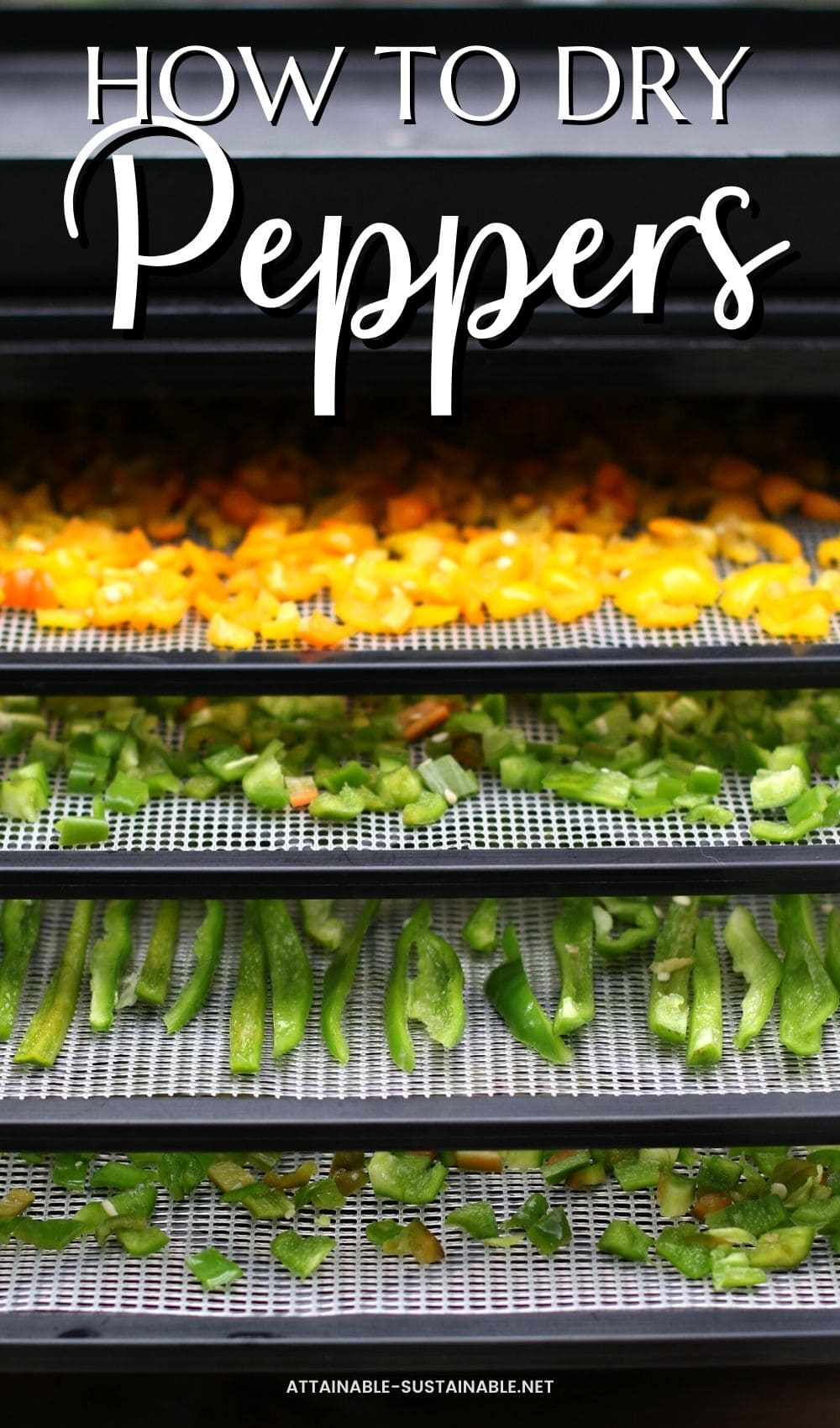





I dehydrated all my peppers just before frost. I just mixed them all up in my Dehydrator. I stored them in a large glass jar in my pantry
We love hot peppers crumbled in salads and all sorts of dishes. We use them everyday ️️️
Perfect!
Thanks for this. My anaheim plants are producing more than I can use now, but not enough to warrant bringing out the pressure canner. This will be a great way to get them stored away.
The recipe lists the temperature at 125, but the body of the text says 135. I know that ultimately it doesn’t matter, as it will simply change the length, and we’re going for texture as a final judge. But someone might get hung up on that, so there ya’ go.
Have a great day!
Fixed, thank you for kindly pointing that out. 🙂